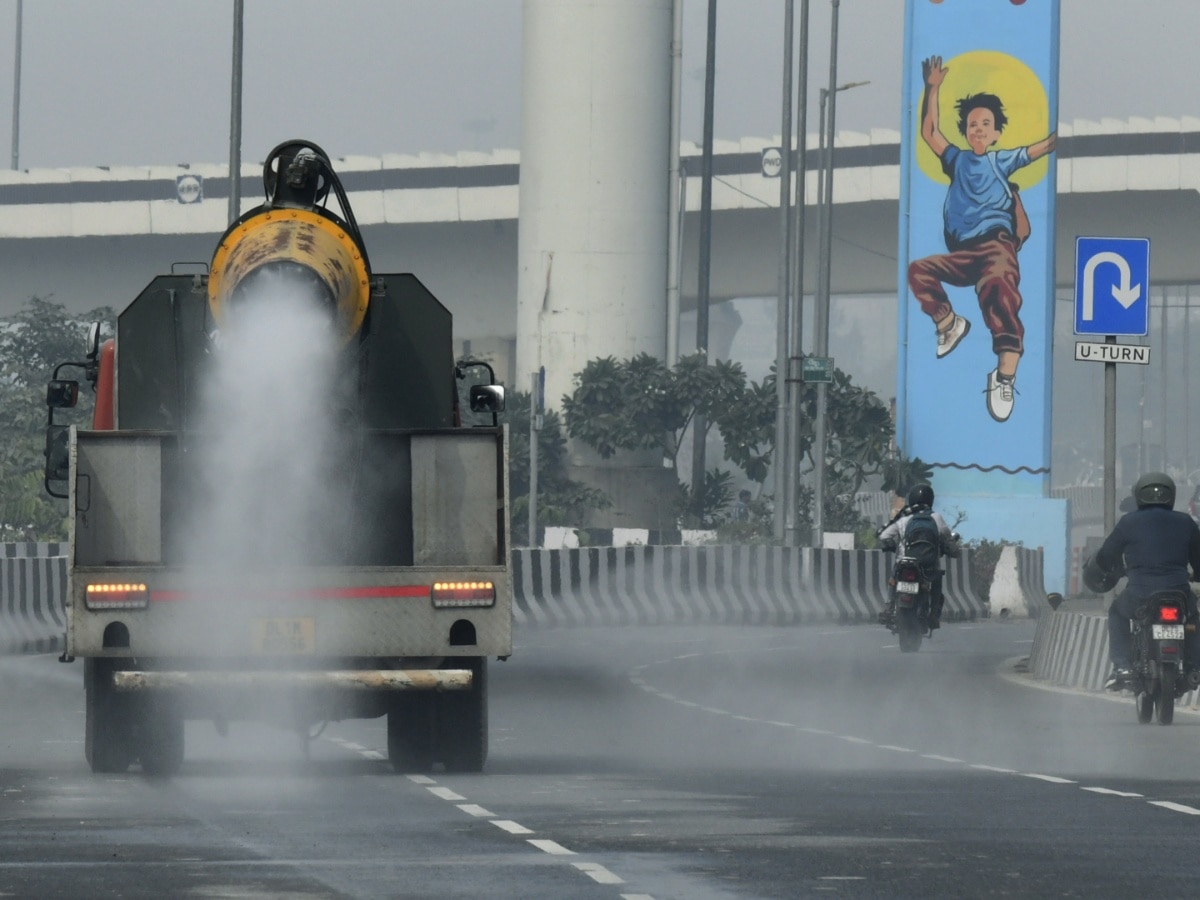As per the World Air Quality Report 2023 by IQAir, air quality in Delhi worsened this year as PM2.5 levels dipped from 89.1 micrograms per cubic metre in 2022 to 92.7 micrograms per cubic metre in 2023.
New Delhi is ranked the world’s most polluted capital city for the fourth consecutive year since 2018, while India emerged as the third worst country in terms of air quality, according to a report. As per the World Air Quality Report 2023 conducted by Swiss organisation IQAir, Begusarai in Bihar topped the charts as the world’s most polluted metropolitan area.
According to the report, with an annual PM2.5 concentration of 54.4 micrograms per cubic metre, India had the third worst air quality out of 34 countries in the year 2023 after Bangladesh (79.9 micrograms per cubic metre) and Pakistan (73.7 micrograms per cubic metre).
In 2022, India was ranked as the eighth most polluted country with an average PM2.5 concentration of 53.3 micrograms per cubic metre.
World’s most polluted capital city
In the report, air quality in Delhi worsened this year as PM2.5 levels dipped from 89.1 micrograms per cubic metre in 2022 to 92.7 micrograms per cubic metre in 2023. The national capital maintained its dubious streak of the most polluted capital city in the world four the fourth consecutive year since 2018.
Begusarai stood out as the most polluted metropolitan area globally with an average PM2.5 concentration of 118.9 micrograms per cubic metre. The city did not even figure in the 2022 rankings.
Critical PM2.5 levels in India: WHO
It is estimated that 1.36 billion people in India experience PM2.5 concentrations exceeding the World Health Organisation (WHO) recommended annual guideline level of 5 micrograms per cubic metre, the report said.
Also, 1.33 billion people, 96 per cent of the Indian population, experience PM2.5 levels more than seven times the WHO annual PM2.5 guideline. This trend is reflected in city-level data, with more than 66 per cent of the country’s cities reporting annual averages greater than 35 micrograms per cubic metre.
IQAir said the data utilised to create this report was aggregated from the global distribution of more than 30,000 regulatory air quality monitoring stations and low-cost air quality sensors operated by research institutions, governmental bodies, universities and educational facilities, non-profit non-governmental organisations, private companies and citizen scientists.
Worsening air quality and premature deaths
The 2022 World Air Quality Report included data from 7,323 locations in 131 countries, regions and territories. In 2023, those numbers have grown to include 7,812 locations in 134 countries, regions and territories.
Causing an estimated one in every nine deaths worldwide, air pollution is the greatest environmental threat to human health. According to the WHO, air pollution is responsible for an estimated seven million premature deaths worldwide every year.
Exposure to PM2.5 air pollution leads to and exacerbates numerous health conditions, including but not limited to asthma, cancer, stroke and lung disease.
Exposure to elevated levels of fine particles can impair cognitive development in children, lead to mental health issues, and complicate existing illnesses, including diabetes.
(With PTI inputs)
–>
